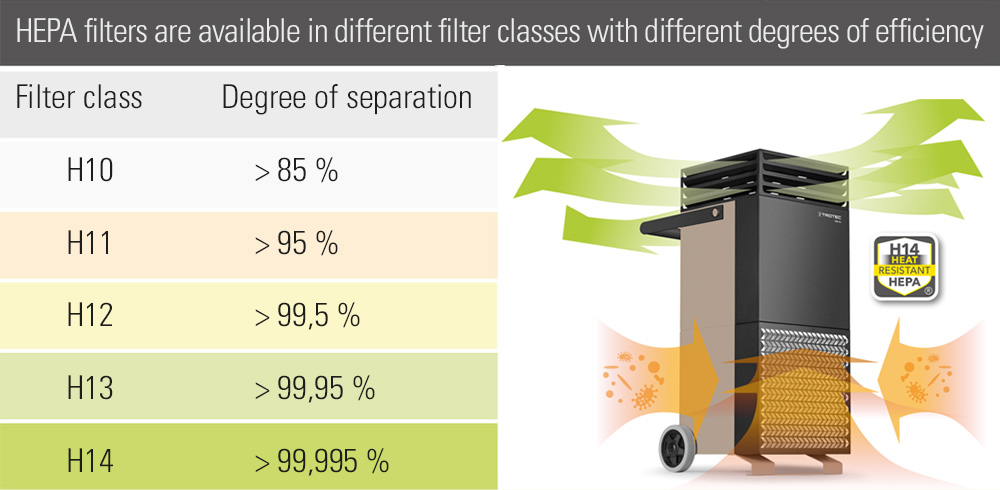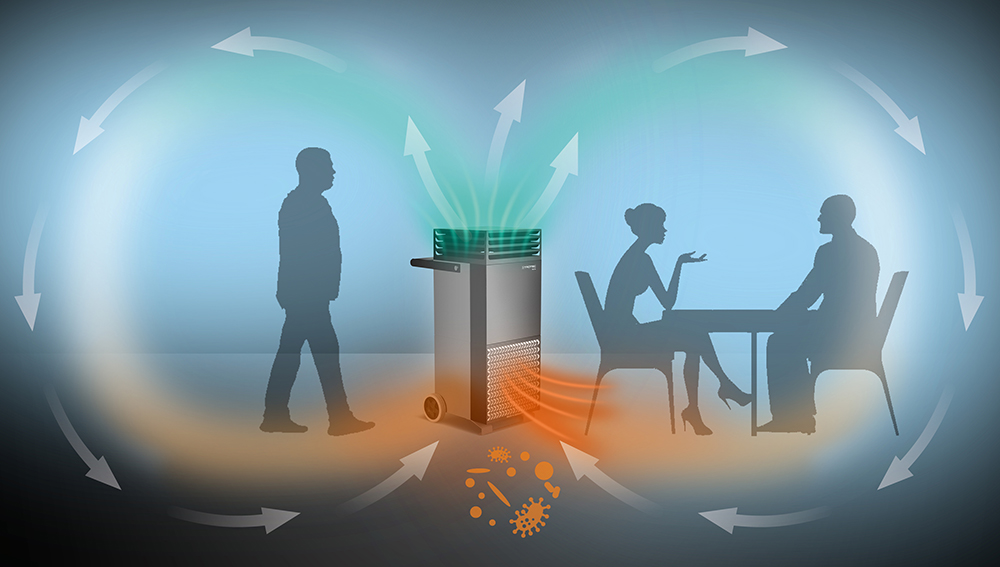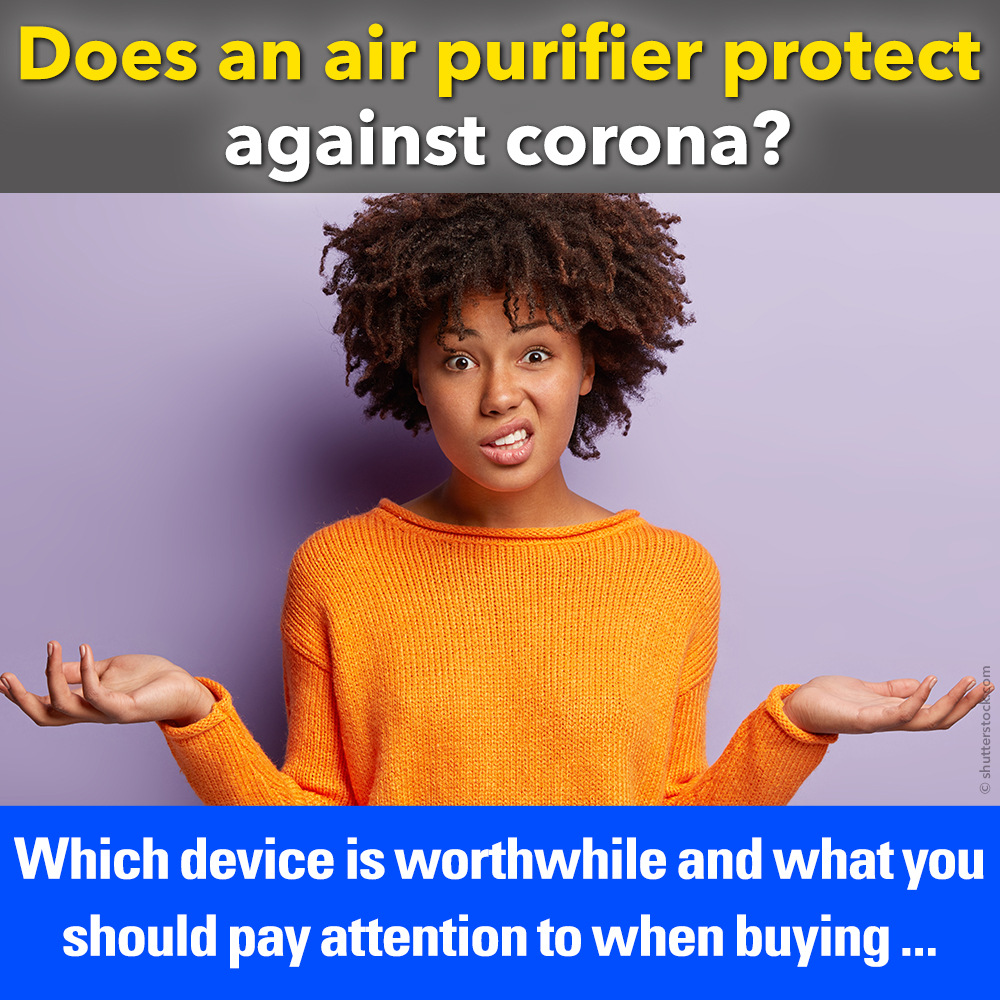Air purifiers are currently in demand as never before. They filter house dust, pollen, mould spores or bacteria from indoor air. In times of corona, many of these devices are also offered as a wonder weapon against the corona virus. Or they advertise air performance that could only be achieved without any filter at all. With this in mind, below we give you an overview of what to consider when buying an air purifier.
Clean air promotes well-being
For allergy sufferers, asthmatics and people who live in areas with high levels of particulate matter, a classic air purifier for domestic use is often the first choice. These devices filter pollen, mould spores, fine dust, house dust and bacteria from the air we breathe. Designer units such as the air purifiers AirgoClean 10 E, AirgoClean 15 E, AirgoClean 105 S and AirgoClean 205 S create a clean air environment in the office or at home and thus promote performance. Sickness-inducing pollutants and allergens are filtered out of the air so that only clean and healthy air is returned to the room and inhaled.
But what about viruses?
In order to filter viruses quickly and reliably out of the indoor air, an air purifier with an integrated HEPA filter (high-efficiency particulate air) is essential. While most bacteria have a diameter of about 0.6 to 1.0 micrometer (µm), viruses are up to a hundred times smaller. The SARS-CoV-2 corona virus, for example, is only about 0.06 – 0.14 micrometers in size.
Be careful with HEPA! Because not all “HEPA” is the same

So when it comes to the best possible protection against airborne viruses, only devices with HEPA filters of filter class H14 offer the highest filter efficiency. Because only filters with Filter Class H14 reliably filter even the smallest infectious aerosols from the room air. Although many manufacturers advertise their devices as HEPA air purifiers, they do not mention the filter class, which in most cases is “only” H10, H11 or H13.
The new reference in HEPA filtration: HEPA Heat Resistant Filter (H14)
Other air purifiers, such as the TAC V+ high-frequency air purifier, even exceed the requirements of the H14 filter class and go one step further with the new H14 HEPA heat-resistant filter. These air purifiers have a thermal self-cleaning function for the HEPA filter.
Or to put it simply: Indoor air is not only freed from floating viruses. The viruses, which are filtered out, are additionally “killed” in the air purifier via heat treatment (technically correct term: inactivated). This process is familiar to medical technology. Hospitals and dentists use thermode contamination, for example, to sterilise medical equipment.
But even the best HEPA filter is no guarantee for virus-free air. The air performance of the air purifier is just as decisive as the filter performance. After all, what good is the best virus filter if the infectious room air does not reach the device to be cleaned as quickly as possible.
Maximum air performance: Don’t fall into the interpretation trap
You should be aware of the following: The air performance of many air purifiers is indicated in the advertising as “free air-flow” or with “maximum air performance”. However, this air capacity only describes the maximum air capacity of the fan – without any filter. Therefore, this performance specification is technically correct, but at the same time misleading. The “real” air flow rate including all filters used is decisive.
As an example: Air purifiers with a “free air-flow” air capacity of 500 m³/hour filter only 120 m³/hour with an H13 HEPA filter and as low as only 100 m³/hour with an H14 filter.
In addition, many models lead the user to believe that they still have a full HEPA filter performance at the maximum air flow rate although this only exists at up to 50% of the maximum air flow rate. At such air volumes, a H13 filter performance decreases to that of only H11 for example. Certificates should always accompany each filter individually. And pay attention to the small print in the instructions for use! The same also applies to so-called electrostatic filters, which are generally not at all suitable for separating viruses.
The higher the air exchange rate, the faster the air is freed of aerosols and viruses
To achieve effective air purification, all the air in the room must be circulated and filtered in the shortest possible time. Accordingly, an air purifier should have the highest possible or sufficiently dimensioned air capacity with full filter performance. The more times per hour the air is sucked through the air purifier and freed from viruses and bacteria, the cleaner the air you breathe. And the more the risk of becoming infected in an aerosol cloud decreases. And here’s where the air starts to clear! The air performance of compact air purifiers usually only allows 1 to 2 times the air exchange per hour in smaller rooms. However, this is far from sufficient to effectively protect against the inhalation of infectious aerosols in a room with several people.
Aerosols are the actual source of danger as a potential virus carrier
Viruses are transmitted via so-called aerosol droplets (tiny water particles mixed with air), which are expelled into the air when breathing, speaking or even coughing and sneezing. In these cases, they can fly around invisibly for hours and are inhaled unnoticed. If you want to protect yourself or your employees in an office or restaurant for example against inhaling these airborne particles, which can be infectious, the aerosols must be filtered out of the air as quickly and permanently as possible. This is because they are continuously released into the room air as you breathe and speak.

High Frequency Air Purification: The new reference class in mobile air purification
Basic protection against the inhalation of infectious aerosols can be achieved as of 5 air changes per hour. For optimum protection against airborne viruses in heavily frequented rooms, however, air exchange rates between 10 and 20 air changes per hour are recommended, as is standard in hospitals and operating theatres, for example.
This is too much for most air purification devices on the market. For the TAC V+ air purifier, however, this is child’s play. With a certified HEPA H14 air capacity of over 1,200 m³/h (TAC V+), these high-frequency air purifiers enable even higher air exchange rates and thus even more effective protection.

The right air purifier for every need: Trotec-Shop
Whether you are looking for a compact air purifier for home use, or a high performance air purifier for commercial use. Trotec has the right air purifier for every application and in the necessary dimensions. All devices are available online in the Trotec Shop.
Still have questions? Our expert advisors will be happy to provide you with further information.


